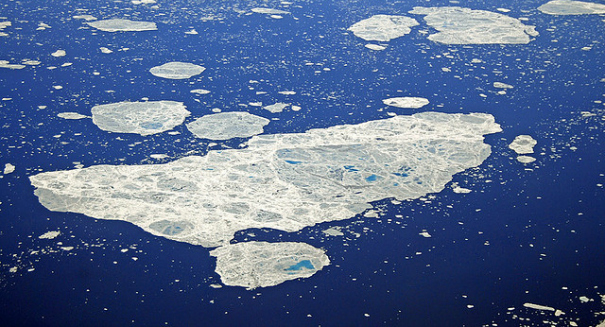
The researchers looked at 10 years worth of data and studies on the topic.
Researchers at the University of Alaska Fairbanks report that the loss of Arctic sea ice spurs the greening of the Arctic. According to a news release, their analysis is a detailed examination of how the decline of northern sea ice impacts surrounding areas.
“Our thought was to see if sea ice decline contributed to greening of the tundra along the coastal areas,” said Uma Bhatt, an associate professor with the University of Alaska Fairbanks’ Geophysical Institute. “It’s a relatively new idea.”
The researchers looked at 10 years worth of data and studies on the topic. The results reveal that sea ice decline is altering marine and terrestrial food chains. For example, sea ice loss means a decline in sea ice algae, which is the basis of the marine food web. Bigger plankton is prospering, taking the place of smaller, but more nutrient dense plankton. At this point, researchers aren’t sure what that entails for the Arctic region.
Above water, sea ice decline has terminated old passageways of animal movement across sea ice while creating new passageways for marine animals in others. As a result, some animals and plants will become more confined. In fact, entire biomes may be devastated in the farthest north and coldest parts of the Arctic without the cooling impacts of shrinking summer sea ice.
According to Skip Walker, a professor at the University of Alaska Fairbanks’ Institute of Arctic Biology, warming soils offer a chance for new vegetation to grow where less vegetation previously grew. This adds to an overall greening of the Arctic that can be spotted from space.
After studying a 1982-2010 times series of remote sensing data for trends in sea ice, land-surface temperatures and alterations in the vegetation supply, Bhatt found that regardless of an overall warming and greening of the Arctic areas in North America, some areas in northern Russian are revealing recent cooling trends and losses in vegetation productivity. The researchers aren’t sure why this is happening.
According to Bhatt, the study’s findings show the intricacy of the arctic system and why researchers from various scientific fields should work side-by-side to learn more about it.
The researchers discussed their findings in greater detail in a recent issue of Science magazine.
What is your reaction the researchers’ findings? Sound off in the comments section.
Leave a Reply